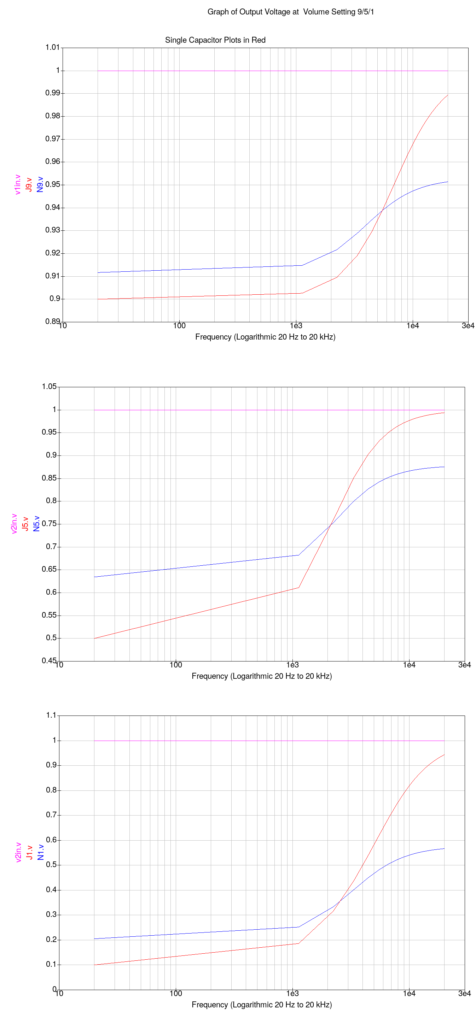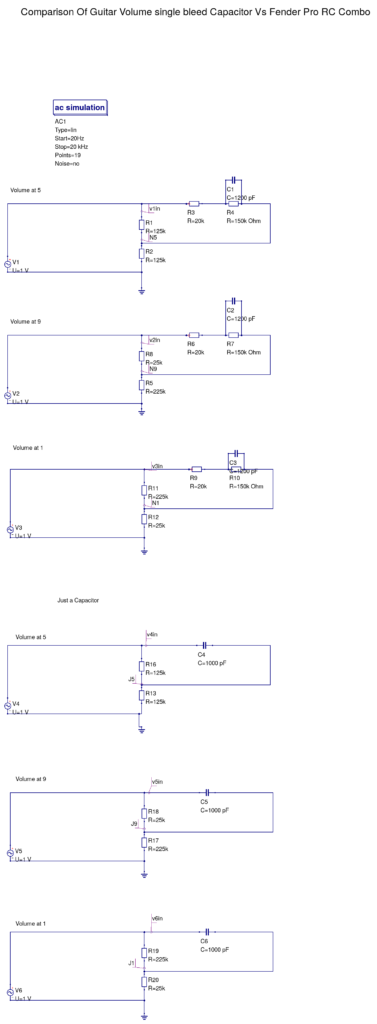Many guitars have a “bleed” capacitor across the volume potentiometer so that as the volume is reduced the high frequencies are not as attentuated as much.Companies such as Fender also use an RC network to give more bass as the volume is reduced.
Typical combination are explained in this article https://www.fender.com/articles/tech-talk/how-a-treble-bleed-circuit-can-affect-your-tone So just out of interest (and as I wanted a demo circuit to use with qucs The Quite Universal Circuit Simulator ) I did some circuit simulation.
I did some frequency plots comparing the single capacitor configuration vs the new Fender network. I’ve shown plots for 3 settings of volume. These are settings of the pot from the point of view of resistance from the wiper to ground. So 5 is the pot at halfway FROM an electrical point of view, 9 at 90%, 1 at 10%
It should be remembered that volume/tone control pots are likely to be audio or logarithmic taper rather than linear. So halfway through the rotation wont be 50% signal level.
If you need an explantion of log/linear pots have a look at http://www.resistorguide.com/potentiometer-taper/
As you would (probably) expect the difference are most obvious when the volume pot is at the lower setting showing a significant amount of high frequency signal getting through.
The overal signal level is higher for a given pot position (other than at max) on the Fender network due to the effect of the top of the pot and the wiper being in parallel with the resistors in the bleed circuit (a total of 170K). So when the pot is at 10% between wiper and ground ie 25K the remaining 225K is in parallel with that 170K yielding about 96K so that effective pot position is nearer 20% (ish)…and yes I could have accounted for that in the circuit but didnt, but if you want to there is a link to the qucs file below.
Anyway long and short of all this, is yes the new Fender combination will seem less toppy….But we knew that at the start 🙂
The qucs file can be downloaded here

The circuits in Qucs

